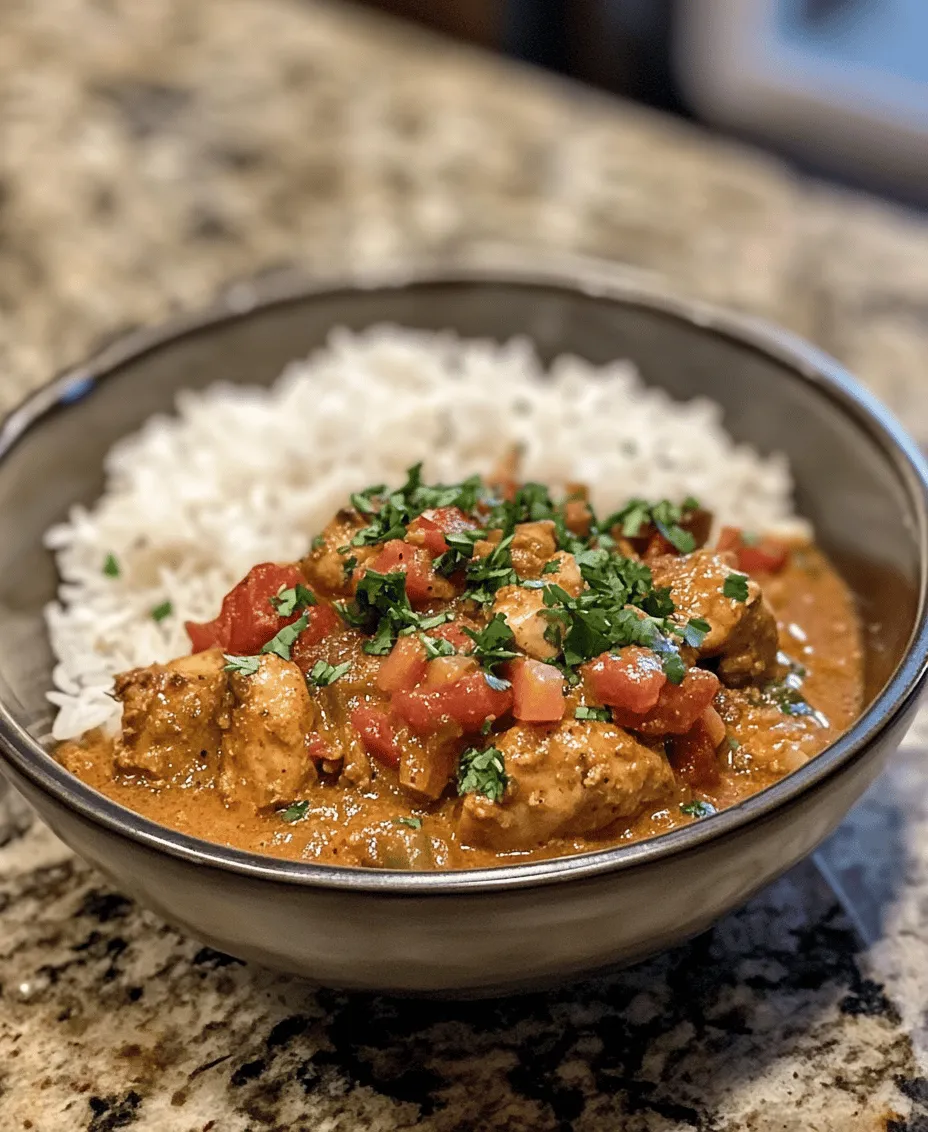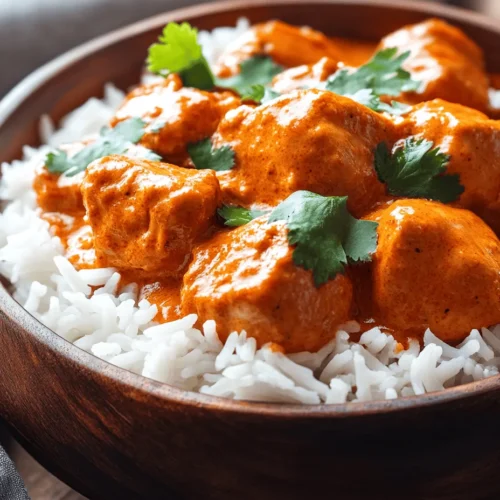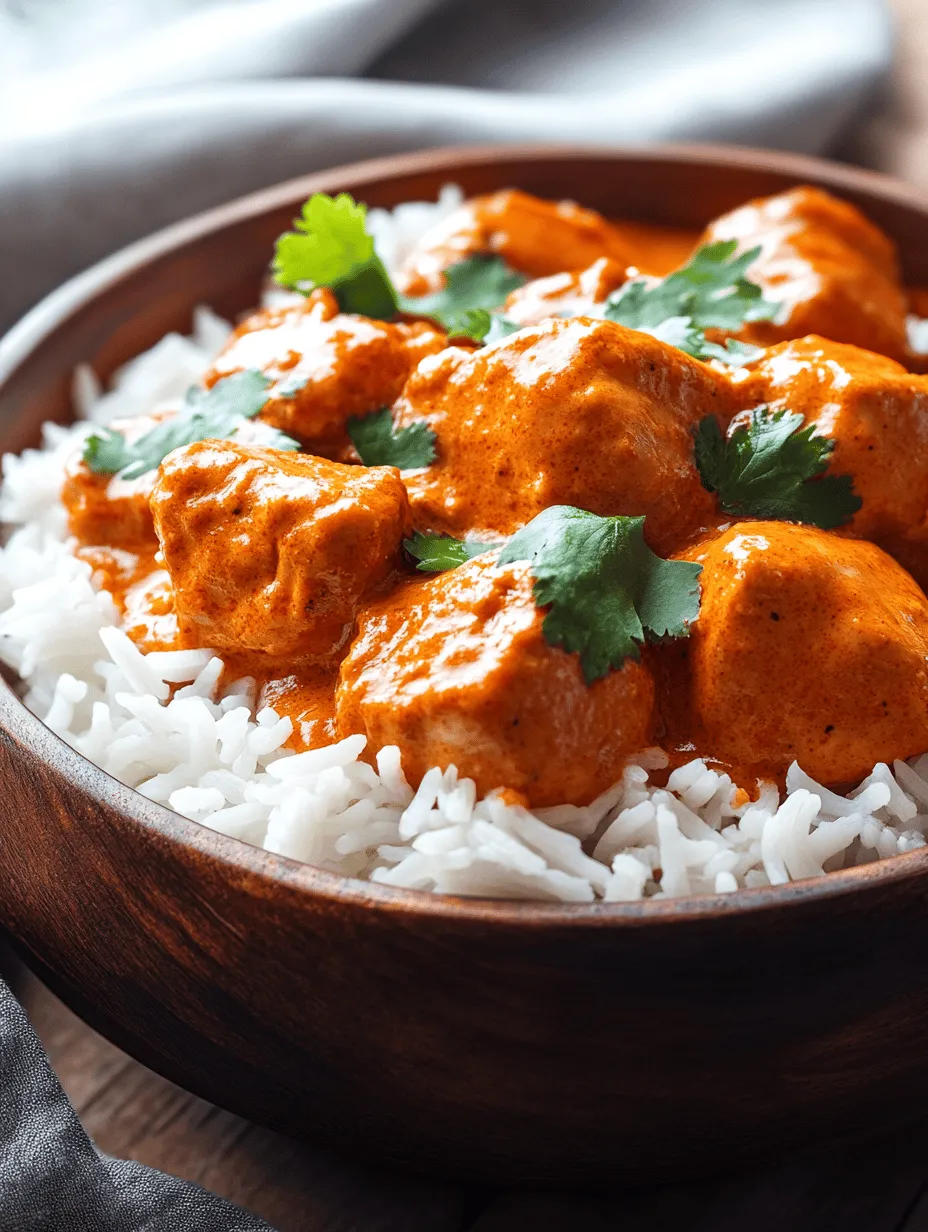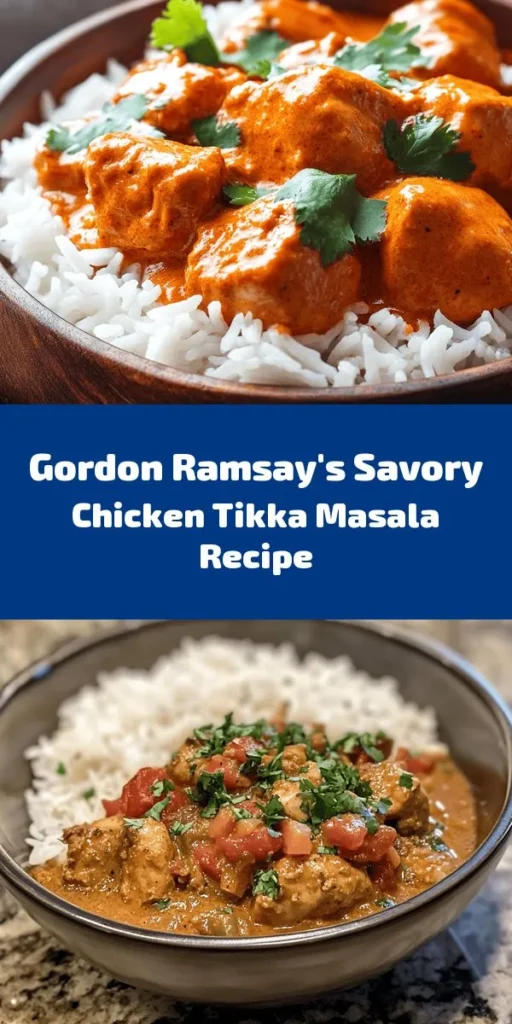Introduction
Chicken Tikka Masala is not just a dish; it’s a cultural phenomenon that has captivated taste buds across the globe, especially in India and the United Kingdom. This vibrant dish, characterized by its tender marinated chicken pieces simmered in a rich and creamy tomato-based sauce, has earned its place as a staple in many households. Its unique blend of spices and flavors speaks to the heart of Indian cuisine while simultaneously reflecting its significant status in British culinary tradition.
Gordon Ramsay, a name synonymous with culinary excellence, brings his own flair to this classic dish. Known for his commitment to flavor and authenticity, Ramsay’s Chicken Tikka Masala is a perfect representation of how traditional recipes can be elevated with expert techniques and high-quality ingredients. In this article, readers can expect to find detailed instructions on how to prepare this mouthwatering dish, along with insights into its cultural significance and the elements that make it truly special.
Understanding Chicken Tikka Masala
Historical Background of Chicken Tikka Masala
The origins of Chicken Tikka Masala are a topic of much debate, often leading to lively discussions among food enthusiasts and historians alike. While it is widely recognized as a dish deeply rooted in Indian cuisine, its exact beginnings are somewhat murky. One popular theory suggests that the dish was born in the Indian subcontinent, evolving from the traditional Chicken Tikka, which comprises marinated chicken pieces cooked in a tandoor (a clay oven).
However, the dish’s modern incarnation is often credited to British Indian restaurants that sought to cater to the British palate, particularly in the 1960s and 1970s. Many believe that it was created by a Bangladeshi chef in the UK who, upon receiving a customer complaint about dry chicken, improvised by adding a creamy tomato sauce to the dish. This ingenuity resulted in a dish that would become a beloved staple across the UK and beyond, leading to its recognition as one of the nation’s favorite meals.
Its Place in Indian and British Culinary Culture
Chicken Tikka Masala has transcended its origins to become a symbol of the fusion between Indian and British cuisine. In India, while Chicken Tikka remains a popular street food, the creamy masala version is often viewed as a Western adaptation. In the UK, however, it has become a quintessential dish, frequently featured on restaurant menus and enjoyed in homes across the country. In fact, in 2001, British Foreign Secretary Robin Cook famously remarked that Chicken Tikka Masala was “a true British national dish,” highlighting its cultural integration.
The Appeal of Chicken Tikka Masala
The enduring appeal of Chicken Tikka Masala lies in its harmonious balance of flavors and textures. The dish typically features tender pieces of chicken that have been marinated in spices and yogurt, providing a depth of flavor that is both rich and satisfying. The accompanying sauce, made with tomatoes and cream, adds a lusciousness that complements the spices beautifully. This combination makes it a favorite among both spice lovers and those who prefer milder flavors.
Flavor Profile and Ingredients
At the heart of Chicken Tikka Masala is a complex flavor profile that combines warmth, spice, and creaminess. The key ingredients include boneless chicken thighs, which are marinated to become tender and flavorful; a blend of spices such as garam masala, cumin, coriander, turmeric, and chili powder; and a sauce made from tomatoes and coconut milk, which provides a creamy base.
This dish is not only about the primary ingredients but also about the quality and freshness of the spices. Authenticity plays a crucial role, as using high-quality spices can significantly enhance the dish’s flavor and aroma.
Popularity and Variations Across Regions
Chicken Tikka Masala has inspired countless variations, each reflecting local tastes and ingredients. In India, you might find versions that are spicier or include different types of meat, while in Britain, it is often served with basmati rice or naan bread. Additionally, many chefs have put their own spin on the dish, experimenting with different marinades and sauces to create unique takes on the classic recipe.
Ingredients Breakdown
Overview of the Key Ingredients in Gordon Ramsay’s Chicken Tikka Masala
When preparing Gordon Ramsay’s Chicken Tikka Masala, it’s essential to use quality ingredients to achieve the best results. Each component plays a crucial role in building the dish’s signature taste and texture.
– Boneless Chicken Thighs: Ramsay prefers using boneless chicken thighs over chicken breasts due to their higher fat content and richer flavor. The thighs remain juicy and tender even after cooking, making them ideal for this dish.
– Yogurt: This ingredient is key for marinating the chicken, as it helps to tenderize the meat while also infusing it with flavor. The acidity in the yogurt breaks down the proteins in the chicken, leading to a more succulent outcome.
– Spices: A blend of spices is what truly elevates Chicken Tikka Masala. The use of garam masala, cumin, coriander, turmeric, and chili powder creates a depth of flavor that is both aromatic and complex. Each spice contributes its unique profile, resulting in a well-rounded dish.
– Coconut Milk: While traditional recipes often use cream, Ramsay incorporates coconut milk to add a subtle sweetness and creaminess to the sauce. This not only enhances the flavor but also makes the dish slightly lighter.
Tips for Sourcing Quality Ingredients
To achieve the best results, sourcing quality ingredients is paramount. Here are some tips:
– Freshness and Authenticity in Spices: Look for whole spices that can be ground fresh, as this will provide a more potent flavor. Visiting an Indian grocery store can also ensure you find the right spices specific to this cuisine.
– Boneless Chicken Thighs: Opt for free-range chicken if possible, as it tends to have better flavor and texture.
– Coconut Milk: Choose full-fat coconut milk for a richer sauce; check the label to ensure there are no additives or preservatives.
– Alternatives for Dietary Restrictions: For those with dietary restrictions, yogurt can be substituted with plant-based alternatives, such as almond or soy yogurt, which can still provide a creamy texture without the dairy.
Step-by-Step Preparation
Marinating the Chicken
Marination is a critical step in preparing Chicken Tikka Masala, as it allows the flavors to penetrate the meat, ensuring a delicious outcome. Here’s how to do it:
1. Combine the Marinade Ingredients: In a large bowl, mix together yogurt, garam masala, cumin, coriander, turmeric, chili powder, and a pinch of salt. The yogurt acts as a base, while the spices add depth of flavor.
2. Add the Chicken: Cut the boneless chicken thighs into bite-sized pieces and add them to the marinade. Ensure each piece is thoroughly coated with the marinade.
3. Marinate: Cover the bowl with plastic wrap and refrigerate for at least 1 hour, preferably overnight. This extended marination time allows the chicken to absorb the flavors and become tender.
Cooking the Chicken
Once the chicken has been marinated, it’s time to cook it to perfection:
1. Preheat the Grill or Oven: If using a grill, preheat it to medium-high heat. For oven cooking, set it to broil.
2. Cook the Chicken: If using a grill, thread the marinated chicken pieces onto skewers and grill for about 15-20 minutes, turning occasionally until fully cooked and slightly charred. If cooking in the oven, arrange the chicken on a baking sheet and broil for about 10-15 minutes, ensuring even cooking.
3. Check for Doneness: The chicken should reach an internal temperature of 165°F (74°C). The exterior should be lightly charred, while the inside remains juicy and tender.
This step sets the stage for the next phase of the recipe, where the grilled chicken will be combined with the creamy sauce, culminating in a dish that’s both aromatic and bursting with flavor.
By following these initial steps and understanding the significance of each ingredient, you are on your way to creating Gordon Ramsay’s Chicken Tikka Masala, a dish that celebrates the rich tapestry of Indian and British culinary traditions. Stay tuned for the continuation of this article, where we will delve into the remaining steps and tips for achieving the perfect Chicken Tikka Masala.

Techniques for Achieving the Perfect Golden Brown Texture
To achieve that coveted golden brown texture for your Chicken Tikka Masala, focus on the cooking technique. First, ensure your chicken pieces are patted dry before marinating. Excess moisture can prevent browning. When you’re ready to cook, preheat your pan or grill properly. A hot surface will sear the chicken, creating a beautiful crust while locking in juices.
As you cook, resist the temptation to move the chicken around too much; instead, let it sit undisturbed for several minutes on each side. This allows for proper caramelization. If you notice the chicken sticking, it’s a sign that it hasn’t developed a good sear yet. Once you see it lift easily from the pan, it’s ready to flip.
Importance of Cooking in Batches and Avoiding Overcrowding the Pan
Cooking in batches is crucial for the success of your Chicken Tikka Masala. Overcrowding the pan leads to steaming rather than searing, which inhibits the development of that rich, golden crust. If your pan is too crowded, the chicken pieces will release moisture, making it difficult to achieve that desired texture.
To ensure even cooking, divide your chicken into manageable portions. This might mean cooking in two or three batches, but the extra time will be worth it for a well-cooked, flavorful dish. Keep the cooked pieces warm on a plate covered with foil while you finish the remaining batches.
Preparing the Sauce
Now that your chicken is beautifully browned, it’s time to prepare the sauce, which is the heart of Chicken Tikka Masala. The sauce’s complex flavors come from the perfect balance of spices, aromatics, and tomatoes.
Sautéing Onions, Garlic, and Ginger: Building the Aromatic Base
Start with a large pot or deep skillet over medium heat. Add a generous amount of oil and let it heat before adding finely chopped onions. Sauté the onions until they are soft and translucent, about 5-7 minutes. This softening process is essential as it lays the foundation for the sauce’s flavor.
Next, add minced garlic and ginger. These ingredients not only add depth but also bring a fresh, zesty element to the sauce. Sauté them for an additional 1-2 minutes until fragrant. Be cautious not to burn them, as this can lead to bitterness in your sauce.
Cooking Down Tomatoes for Depth of Flavor
Once your aromatics are ready, it’s time to add the tomatoes. Use a combination of crushed tomatoes and tomato paste for a rich base. The crushed tomatoes provide a juicy texture, while the paste intensifies the flavor and adds a beautiful color to the sauce. Stir the mixture well, then let it simmer gently for about 10-15 minutes. This step is crucial as it allows the flavors to meld and the sauce to thicken.
Feel free to add a splash of water if the sauce becomes too thick. Adjust the seasoning with salt and pepper, and don’t hesitate to add a pinch of sugar if the acidity of the tomatoes is too pronounced.
Combining Chicken with Sauce
With your sauce ready, it’s time to combine it with the cooked chicken. Carefully transfer the chicken pieces into the sauce, ensuring they are well coated. Let everything simmer together for an additional 10-15 minutes. This simmering phase is essential for the chicken to absorb the flavors of the sauce.
As you cook, check the chicken for doneness. It should reach an internal temperature of 165°F (75°C) to ensure it is safe to eat. The chicken will be tender and infused with the aromatic spices, creating a satisfying dish.
Balancing Flavors with Coconut Milk and Seasoning Adjustments
To achieve that signature creamy texture that Chicken Tikka Masala is known for, stir in a can of coconut milk. Coconut milk adds richness and balances the spices, making the dish more approachable for those who prefer a milder flavor profile.
Taste the sauce and adjust the seasoning as needed. You might find that a bit more salt, a dash of garam masala, or a squeeze of lime juice enhances the dish further. The balance of flavors is key: you want a harmonious blend of spice, acidity, and creaminess.
Garnishing and Serving
Now that your Chicken Tikka Masala is beautifully cooked and seasoned, it’s time to garnish and serve.
The Role of Fresh Cilantro in Presentation and Flavor
Chop fresh cilantro (coriander leaves) and sprinkle it generously over the dish just before serving. This not only adds a pop of color but also a fresh, herbal note that elevates the overall flavor.
You can also garnish with a swirl of cream or yogurt for an elegant touch. This adds a contrasting texture and makes the dish visually appealing for your guests.
Suggested Pairings: Basmati Rice and Naan Bread for a Complete Meal
Traditionally, Chicken Tikka Masala is served with basmati rice and naan bread. The fragrant basmati rice complements the rich sauce, while naan is perfect for scooping up every last bit of the dish. You might consider providing a side of raita (a yogurt-based condiment) to cool the palate, especially if your dish has a bit of heat.
Nutritional Information
Understanding the nutritional profile of your Chicken Tikka Masala can help you appreciate its health benefits while enjoying a flavorful meal.
Overview of the Dish’s Nutritional Profile
A typical serving of Chicken Tikka Masala (approximately 1 cup) contains around 400-500 calories, depending on the ingredients used and portion sizes. The chicken provides a solid source of protein, while the coconut milk adds healthy fats.
Breakdown of Calories, Protein, Fats, and Carbohydrates per Serving
– Calories: 450
– Protein: 30g
– Fats: 25g (mostly from coconut milk)
– Carbohydrates: 30g
Health Considerations and Benefits of the Ingredients
The spices in Chicken Tikka Masala, such as turmeric, cumin, and coriander, offer numerous health benefits. Turmeric has anti-inflammatory properties, while cumin aids in digestion. Furthermore, the use of chicken breast keeps the dish lean, and the addition of coconut milk introduces healthy fats that can support heart health.
The Role of Spices in Health and Wellness
Spices are not merely for flavor; they are integral to the dish’s health profile. Each spice contributes unique antioxidants and anti-inflammatory compounds that can enhance overall well-being.
Balancing Indulgence with Nutrition
While Chicken Tikka Masala is undeniably indulgent, it can be part of a balanced diet. Pairing it with whole grains and fresh vegetables can create a nutritious meal that satisfies both cravings and dietary needs.
Cultural Significance of Chicken Tikka Masala
Chicken Tikka Masala is not just a meal; it’s a symbol of culinary fusion that reflects the blending of Indian and British cultures.
The Dish as a Symbol of Culinary Fusion
Originating from Indian cuisine, Chicken Tikka Masala has taken on a life of its own, especially in the UK, where it has become a national dish. This fusion represents the adaptability of culinary traditions, showcasing how flavors can transcend borders.
How It Reflects the Blending of Indian and British Cultures
The dish embodies the migration and cultural blending that occurred during the British colonial period. It highlights how Indian cooking techniques and spices adapted to local tastes, creating a dish that is both rich in tradition and modern sensibility.
The Impact of Chicken Tikka Masala on Global Cuisine
Today, Chicken Tikka Masala is enjoyed worldwide, found in restaurants and homes alike. Its popularity has sparked numerous variations, each highlighting different ingredients and cooking methods, proving that great food knows no boundaries.
Popularity in Restaurants and Homes Worldwide
From corner takeaways to high-end restaurants, Chicken Tikka Masala remains a staple. It’s a comfort food for many, often associated with family gatherings and celebrations, making it a dish that brings people together.
Personal Anecdotes or Stories Related to the Dish’s Enjoyment
Many food enthusiasts have their own stories of enjoying Chicken Tikka Masala, whether it’s a childhood memory of family dinners or a recent culinary adventure. Each story adds to the rich tapestry of this beloved dish, connecting people through shared experiences.
Conclusion
Gordon Ramsay’s Chicken Tikka Masala is more than just a meal; it’s a flavorful exploration of cultures and a delicious way to bring people together. With its rich spices, creamy sauce, and tender chicken, it has become a favorite for many culinary enthusiasts. By trying this recipe at home, you not only get to enjoy a classic dish but also partake in a cultural journey that reflects the joy of cooking and sharing meals with loved ones. Embrace the flavors of Chicken Tikka Masala and transform your kitchen into a hub of culinary delight.



